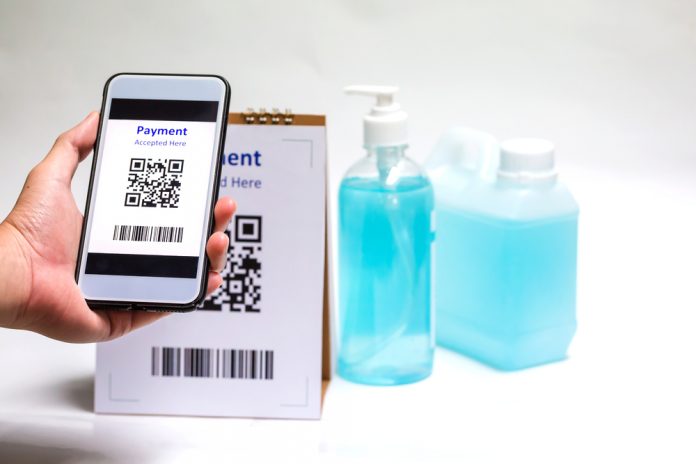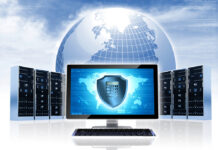The professionals at https://www.barcodeworld.co.za provide high-end, valuable information regarding barcodes, and this article highlights the way barcodes are being used during this worldwide pandemic. Generally speaking, most members of the public are aware of the barcodes that they, as consumers, encounter in retail settings (like when they shop for groceries or when they purchase medication). Unique barcodes can be a critical resource in a healthcare setting. Barcodes are unique to each medical product and include information such as the batch number of a certain type of medication, the ingredients the medication contains, and the expiration date. Even patients are issued barcodes upon being admitted at a hospital or other healthcare facility.
Barcodes can be used to track important data across a wide variety of aspects related to medication and healthcare. This is a reliable and rapid method of capturing information. This information can also help doctors and nurses by providing them with feedback, for example, on stock and availability of equipment. Barcodes help hospitals and clinics monitor stock levels of medicines and equipment and are critical in ensuring a business is able to keep track of the hundreds of medical devices and supplies that are critical to the functioning of that facility. Unique barcodes are even used in implants, such as stents and artificial hips.
With the coronavirus pandemic having taken over public dialogue over the past few months, the role of barcodes in medicine has been brought to the forefront. For instance, one company produces scanners that identify staff and patients and monitor surgical implants, equipment, and materials. During the recent pandemic, the scanners were modified, enabling them to additionally monitor the location and use of ventilators, which are critical in treating serious coronavirus cases where patients need assistance with breathing. The scanner enables hospital administrators to quickly access important information, such as the location of ventilators, their status (operational or non-operational), and how many remain available in a given facility.
In some countries, unique barcodes in the form of QR barcodes are being used during the pandemic for quarantine enforcement (for example, Hong Kong and Malaysia). People undergoing mandatory 14-day quarantine periods (such as travelers) are issued a bracelet containing a QRC. The wearer is then asked to log on to a website and register with the official COVID-19 tracing app, which traces the person’s movements, ensuring they do not break protocol or leave the quarantine early.
In South Africa, another tool being used to fight coronavirus is a scanning device. Employees register with the program and are then issued a barcoded identification. Employees use their unique barcodes to log important information such as their temperature, the answers to a risk assessment, and any other relevant information.
The system operates by requesting employees to complete a questionnaire before they leave for work from their place of residence. They do this using their cell phone or laptop. The results of the assessment are calculated in real time and, if successful, an access pass is sent to the employee. This gives them access to the work premises; however, their temperature still needs to be measured and entered into the system via a scanner. An employee who fails the risk assessment will receive a yellow or red notice, informing them that they need a second round of screening, or it recommends that they stay home. The human resources department is informed of such cases.
At the entrance to the workplace, this system works on any handheld device in addition to a laptop or tablet. An educational version of the system has also been released to schools and colleges in the country. The system is affordable, easy to operate, reduces administration, is easy to set up, and doesn’t require extensive training. Through this system, the spread of the pandemic is being prevented. This system was specifically designed to combat COVID-19, but in the future it could be tailored to monitor other illnesses that are relevant to a specific region or country. Read about this in more detail in the Quick Scan CBN Article on returning to work.
Yet another company has developed an app that was specifically designed for use in locations where healthcare workers are dealing with high numbers of patients and potentially COVID-19-positive individuals. Staff need to only use their cell phone to scan a patient’s ID card and the unique barcodes of the test specimen. (A number of formats are readable, including QR, Code128, EAN13, and Data Matrix.) All the data is loaded into the system, avoiding human error, which can easily occur in facilities that treat hundreds of patients each day. This app prevents the transmission of the virus to clinical staff and nurses, who are critical in treating this worldwide pandemic. This app has been made available free of charge and aims to assist healthcare organizations in accessing data, receiving results, and treating patients as quickly as possible. Have a look at this information — Wikipedia Covid-19 Apps.
It should not come as a surprise, however, that criminals have also been quick to take advantage of COVID-19. The European Anti-Fraud Office stated in June 2020 that no less than 340 companies trading in fake equipment have already been identified. These goods may have the correct packaging but will have design faults or use inferior parts. Most of these counterfeit goods are therefore not only ineffective in treating patients, but also downright dangerous, undermining efforts to combat the pandemic.
One of the most common identifiers is the QR code, but can they be used to deter and ward off fraudsters? They contain encrypted information but can be copied. Simple ones are therefore vulnerable, but secure ones are more counterfeit-proof: When it is printed, a secure graphic is embedded into its digital image, becoming a secure code that is protected against being copied. By companies using this technology, criminals selling counterfeit healthcare equipment can be stopped and more lives will be saved. It just goes to show that barcodes have a critical role to play in many industries, including healthcare.
No matter how large or small your company may be, acquire the information and services you need to get up and running or to update or speed up your processing abilities.
Find a Home-Based Business to Start-Up >>> Hundreds of Business Listings.

















































